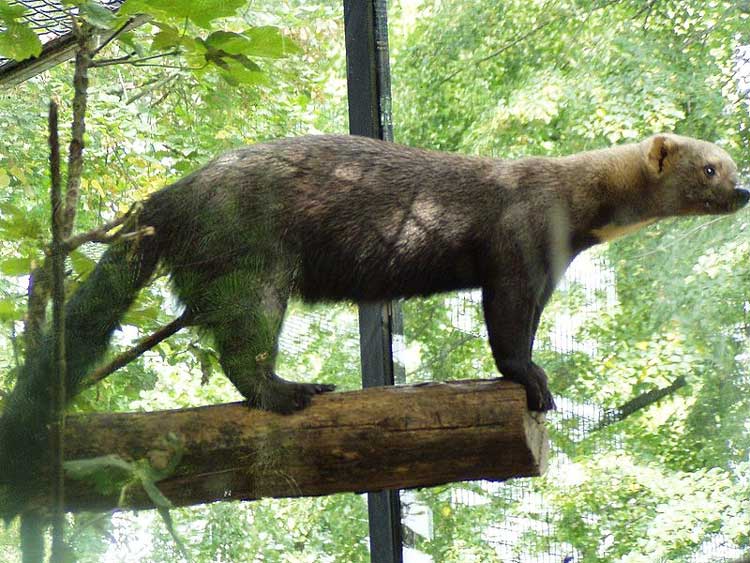Eira barbara (*) Cladus: Eukaryota Name Eira barbara (Linnaeus, 1758) Type locality: "Brasilia," restricted by Lönnberg (1913) to "Pernambuco." * Linnaeus, C., 1758. Systema naturae. 10th ed. Holmiae, Impensis, Direct. Laurentii Salvii, Stockholm, Sweden, 1:48. Vernacular names --------------- The tayra (Eira barbara), also known as the Tolomuco or Perico ligero in Central America, is an omnivorous animal from the weasel family Mustelidae. It is the only species in the genus Eira. Tayras have an appearance similar to weasels and martens, growing to a size of about 60 cm, not including a 45 cm long tail. Most tayras have either dark brown or black fur with a lighter patch on its chest. The fur on its head changes to brown or gray as it ages. Tayras grow to weigh around 5 kilograms (11 pounds), ranging from 2.7 to 7.5 kg (6-16.5 pounds).[2] The tayra, unlike other Mustelidae, does not have embryonic diapause otherwise known as delayed implantation (this reproductive strategy in other mustelids delays embryonic development and allows the female to delay birth of offspring until environmental factors are favorable). The female gives birth to 2 to 4 altricial, black-coated young. Tayras live in the tropical forests of Central America, South America and on the island of Trinidad. They eat mainly fruit, but also carrion, small mammals, reptiles, and birds. They live in hollow trees, burrows in the ground, or nests of tall grass. They travel both alone and in groups during both the day and the night. Tayras are expert climbers, and can leap from treetop to treetop when pursued. They can also run fast and swim well. Tayras will eat most anything, hunting rodents and invertebrates, and climbing trees to get eggs and honey. They are attracted to fruit and can be found raiding orchards. Tayras are playful and easily tamed. Indigenous people, who often refer to the tayra as "cabeza del viejo", or old man's head, due to their wrinkled facial skin, have kept them as household pets to control vermin. Wild tayra populations are slowly shrinking, especially in Mexico, due to habitat destruction for agricultural purposes. Though the species as a whole is listed as a Least Concern species, the northernmost subspecies, Eira barbara senex, is listed as Vulnerable by the IUCN. Subspecies * Eira barbara barbara (northern Argentina, Paraguay, western Bolivia and central Brazil)
* Nowak, Ronald M. (2005). Walker's Carnivores of the World. Baltimore: Johns Hopkins Press. ISBN 0-8018-8032-7 Source: Wikispecies, Wikipedia: All text is available under the terms of the GNU Free Documentation License |
|


